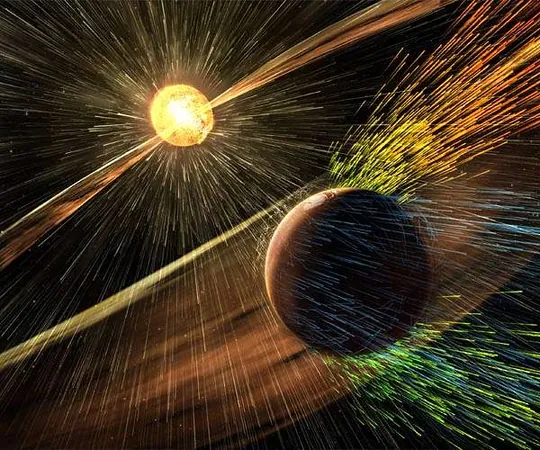
Breakthrough in Solar Storm Research: MSU Model Unveils Secrets of Particle Acceleration
2025-01-19
Author: John Tan
Introduction
In a remarkable advancement for the field of astrophysics, researchers at Michigan State University (MSU), led by graduate student Thomas Do, have developed a groundbreaking model that sheds new light on solar storms and the enigmatic behavior of charged particles in space. As our sun continuously emits streams of plasma and charged subatomic particles—primarily protons and electrons—understanding their interactions with solar phenomena is vital for deciphering the mysteries of space weather and cosmic ray emissions from distant supernovae.
The Challenge of Solar Wind Dynamics
For years, the dynamics of solar wind interacting with intense solar events, such as coronal mass ejections (CMEs), have puzzled scientists. CMEs are explosive bursts of solar plasma that can provoke shock waves in their wake. Do has expanded upon a previous model introduced by astrophysicist Federico Fraschetti, demonstrating how particles accelerate under a broader range of conditions than ever before. This novel approach now includes the behavior of low-energy particles, which had been inadequately addressed in older models, potentially revolutionizing our understanding of charge particle escape.
The Inclusion of Low-Energy Particles
"Previous models predominantly focused on high-energy particles," explains Fraschetti. "By including both high and low-energy particles, we provide a more realistic depiction of how these particles interact with shock waves."
Thomas Do’s Journey and Research Impact
Do's fascination with charged particles began during his undergraduate studies at the Harvard-Smithsonian Center for Astrophysics and has now culminated in a model that predicts particle acceleration and escape dynamics with remarkable accuracy. This enhanced model makes it possible to calculate the number of particles escaping at various energy levels, offering unparalleled insight into solar phenomena.
Timing and Validation with NASA's Parker Solar Probe
The timing of this research could not have been more fortuitous. In September 2022, when the sun reached its solar maximum—characterized by increased solar activity—NASA's Parker Solar Probe was positioned perfectly to collect crucial data. A massive energy eruption from the sun provided a rare opportunity for the research team, allowing them to validate their model against real-time observations of solar events.
Data Correlation with Model Predictions
"We were fortunate to capture the initial stages of particle acceleration as the shock wave struck the probe," Fraschetti added. "The data received aligns remarkably well with the predictions of our model."
Implications for Future Research and Space Weather Forecasting
The successful correlation between the model's predictions and observations from the Parker Solar Probe indicates that their theoretical work could be crucial in other areas of astrophysical research, particularly in forecasting space weather events that can disrupt satellite operations and communication systems on Earth.
Conclusion: A New Perspective on Solar Activity
The discovery comes at a time when understanding solar activity is critical for maintaining technological infrastructure and protecting astronauts venturing into deep space. With the sun’s behavior becoming increasingly unpredictable, such advancements in solar storm research could lead to better preparedness for the potential effects of solar storms on our technology and daily lives.
Looking Ahead
As scientists continue to delve into the complexities of solar phenomena, Do's model stands to pave the way for future studies, promising a deeper understanding of the forces at play in our solar system and beyond. Stay tuned for more updates on this exciting field of research—it’s a discovery that could change our perspective on both the sun and the universe!

 Brasil (PT)
Brasil (PT)
 Canada (EN)
Canada (EN)
 Chile (ES)
Chile (ES)
 Česko (CS)
Česko (CS)
 대한민국 (KO)
대한민국 (KO)
 España (ES)
España (ES)
 France (FR)
France (FR)
 Hong Kong (EN)
Hong Kong (EN)
 Italia (IT)
Italia (IT)
 日本 (JA)
日本 (JA)
 Magyarország (HU)
Magyarország (HU)
 Norge (NO)
Norge (NO)
 Polska (PL)
Polska (PL)
 Schweiz (DE)
Schweiz (DE)
 Singapore (EN)
Singapore (EN)
 Sverige (SV)
Sverige (SV)
 Suomi (FI)
Suomi (FI)
 Türkiye (TR)
Türkiye (TR)
 الإمارات العربية المتحدة (AR)
الإمارات العربية المتحدة (AR)